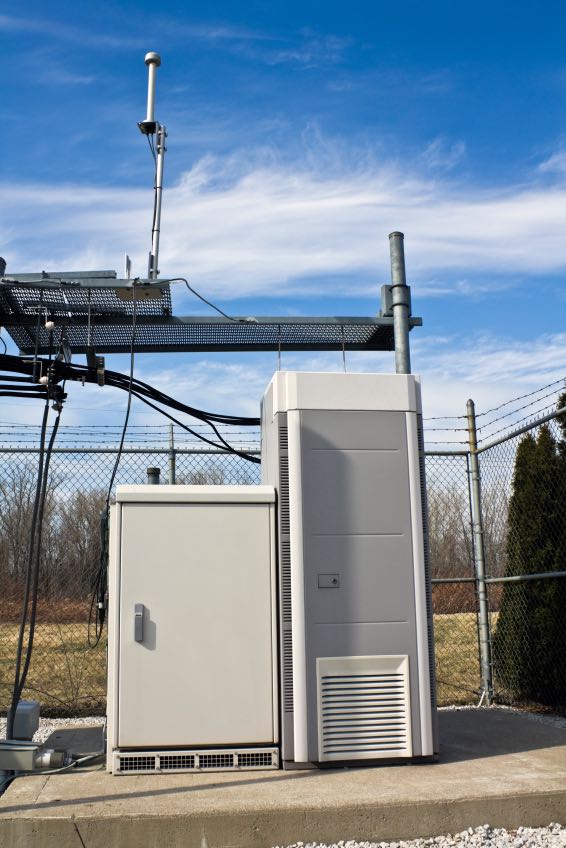How to Regulate Temperature for Outside Plant Enclosures

Although the GR-3108-CORE specification for outside plant cabinets allows a relatively wide range of cabinet operating temperatures, there are many instances when it is better to regulate the temperature to within a relatively small temperature range. This is because some equipment needs to be kept reasonably cool in order to function optimally, and, also, equipment life is extended at lower temperatures.
In order to control the temperature inside the enclosure, it is generally necessary to implement some form of enclosure cooling and, in some instances, to also use cabinet heating. Here’s how you can economically regulate the temperature of your outside plant cabinets.
Find the Optimal Temperature Range
The first criterion to consider is what temperature range is best for the equipment. The GR-3108 Class 1 specification allows the cabinet internal temperature to vary between 41 °F and 104 °F. Unfortunately, this relatively large range is too wide for the optimal operation of storage batteries, which should be kept below 77 °F for optimum life and above 68 °F for best performance. Additionally, although electronic equipment is available that can operate at 104 °F, it is expensive. If the cabinet temperature is kept below 95 °F, lower cost equipment can be used while equipment life will be extended.
Power Supply
The second consideration is the power supply for the cooling equipment. Although many outdoor plant cabinets have commercial power, the cabinets generally run on DC power and have standby batteries to provide power during outages. The conversion of AC power to DC power, and vice versa, incurs significant energy losses. It makes sense to use the DC power supply for enclosure cooling, so that during outages, the overall system efficiency is improved and energy consumption is lower.
Cabinet Heat Load
The final consideration is the total heat load in the cabinet, which largely determines what type of enclosure cooling will work. The cabinet heat load is comprised of several elements:
- Equipment heat load: This is the heat generated by the equipment inside the cabinet, and, because modern communication equipment operates at high power densities, a significant amount of heat may be generated.
- External heat sources: Most outside plant cabinets are exposed to solar radiation, which can increase the heat load by more than 20 percent.
- Ambient temperature: The ambient air temperature in summer can easily exceed 104 °F in many parts of the country, adding to the enclosure heat load.
Altogether, these factors can cause the internal temperature of outdoor cabinets to reach extremely high levels unless effective cooling solutions are used.
Filtered Fans
The simplest and most economical method of enclosure cooling is to use filtered fans. These are very effective with low heat loads and ambient temperatures, but their efficacy is severely limited in high ambient temperatures. Fan-cooled enclosures will always be hotter than the prevailing ambient temperature. Additionally, accurate temperature control is not practical, although thermostats can be used to switch off fans in cool weather.
Air to Air Heat Exchangers
A limitation of filtered fan cooling is that the enclosure must be ventilated. This is not always desirable, and a closed loop air to air heat exchanger can provide similar cooling capacity to filtered fans, but in a sealed enclosure. DC operated units are available and, with a low current draw and good heat removal capability, are ideal for outside plant cabinets. Their only practical limitation is that, like fans, they cannot cool to a temperature that’s below the ambient temperature.
Enclosure Air Conditioner
The most practical solution for cooling a heavily loaded outside plant enclosure in high ambient temperatures is an enclosure air conditioner. Air conditioners can reduce the temperature inside the enclosure to within any desired temperature range irrespective of how hot it is outside. Naturally, the air conditioner needs to be adequately sized for the heat load. DC powered enclosure air conditioners are available that are well suited to the requirements of outside plant locations. These units are equipped with a digital temperature controller to provide accurate temperature control and can also be supplied with a heater to warm the cabinet temperature in cool weather and prevent unwanted condensation when the air conditioner is not operating.
The Thermal Edge Solution
If you need to provide cooling for your outside plant enclosures, contact us and speak to one of our experts. Thermal Edge manufactures a range of DC and AC powered cooling solutions that are designed for open and closed loop enclosure cooling. Our DC units are well suited to provide cooling for remote outside plant cabinets.

